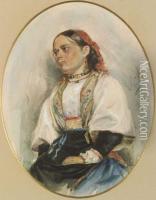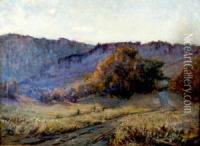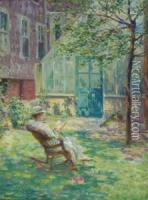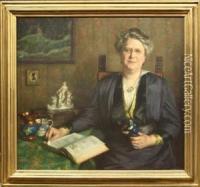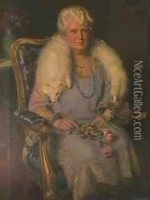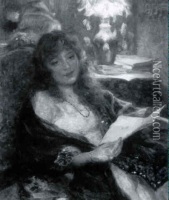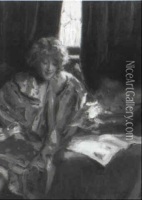Arvid Frederick Nyholm Paintings
Arvid Frederick Nyholm was a Swedish-American artist known for his portraits and genre scenes. Born on December 14, 1866, in Söderköping, Sweden, Nyholm showed an early interest in art which led him to pursue formal training. He began his studies at the Royal Swedish Academy of Fine Arts in Stockholm, where he honed his skills in drawing and painting. After completing his education in Sweden, Nyholm sought to broaden his artistic horizons and moved to the United States in the late 19th century, eventually settling in Chicago, Illinois.
In Chicago, Nyholm quickly became an active member of the city's burgeoning art scene. He continued his studies at the Art Institute of Chicago and became associated with the Palette and Chisel Club, a prominent organization for artists. It was here that he further developed his signature style, which was characterized by a realistic approach to his subjects, often infused with a warm, humanistic quality. Nyholm's portraits were particularly celebrated for their ability to capture the personality and essence of the sitter.
During his career, Nyholm achieved considerable success and recognition. He exhibited his works at various institutions and events, including the Art Institute of Chicago, the Pennsylvania Academy of the Fine Arts, and the National Academy of Design. His portraits often featured prominent figures of the time, and his genre scenes provided a glimpse into the daily life and people of his era. Despite the acclaim, Nyholm remained dedicated to his craft and continued to work and teach in Chicago until his death.
Arvid Frederick Nyholm passed away on October 5, 1927. His contributions to American art, particularly in the realm of portraiture, have been recognized posthumously, and his works are still admired for their technical skill and empathetic portrayal of subjects. Today, Nyholm's paintings can be found in various collections, both private and public, and they continue to be studied and appreciated for their artistry and historical value.
